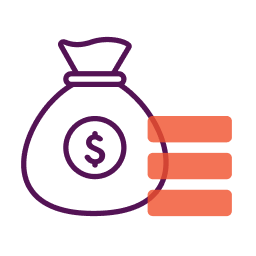On December 22, 2020 Congress passed the stimulus bill which provides for new for Paycheck Protection Program loans and other small business relief. Read more about that legislation and apply for a PPP loan here.
Last week when round two of the PPP was announced and some provisions were added that felt like they would benefit more of the smallest small businesses than the first go round, I was encouraged more PPP funds would get to the businesses that really need them the most to survive the current coronavirus crisis. The SBA made a last-minute change Sunday afternoon by the Small Business Administration which threw a wrench in that.
Having spent the last 40 years (with the exception of a couple of years in a publicly traded company), either working in, managing, or owning a small business myself, I not only understand the pivotal role small businesses play in our economy—I understand the vital role they play in keeping our communities alive in towns large and small all over the country.
In what now appears to be a pattern that favors big banks and their largest customers, on Sunday afternoon, less than 24 hours before the second round of PPP funding was to be released, the SBA changed the rules mid-stream to favor the biggest banks; potentially giving the smallest businesses in the country the short end of the stick … again. What they did might not seem like much on face value, but will have a huge impact on whether or not you get a PPP loan if you only have a handful of employees or aren’t considered an important bank customer to one of the mega-banks.
It’s Just a Spreadsheet, Right?
If you are an SBA-approved lender and have a minimum of 5,000 applications ready to submit to the SBA (after pushback this morning from smaller SBA lenders this was reduced from 15,000 applications as proposed yesterday afternoon), the SBA is allowing a one-time bulk upload of all those documents via an XML spreadsheet into the E-tran system—bypassing the traditional process lenders typically use to submit applications through E-tran for loan guarantees to the SBA. The E-tran system proved to be a bottleneck with the first round of application submissions, but the SBA, with a spreadsheet, has thrown out the baby with the bathwater in favor of a luxury spa catering more to Rodeo Drive than Main Street.
What Does This Mean to Smaller Small Businesses?
From where I sit, this isn’t good for the truly small businesses in America. Let me explain why:
- This benefits the biggest banks that had more than 5,000 applications ready to submit before the funds were even available—basically cutting out many community lenders and non-bank lenders who made good-faith investments to serve those businesses that were underserved in the first round. Many of these groups, knowing E-tran would be a bottleneck again, worked through the weekend processing as many completed applications as possible so the moment E-tran went live this morning, they could get as many customers approved as possible.
- You should expect that this could lead to lenders prioritizing larger-dollar loans over smaller-dollar loans. For example, a lender sitting on 40,000 PPP applications would likely not put their smaller-dollar loans in the bulk send because they are only allowed one bulk send. The bulk send is designed to help alleviate the stress on E-tran, but if the majority of the bulk sends contain higher-dollar loans, then smaller-dollar applicants could see funds disappear before their application makes its way through the SBA system. If you were frustrated that so many big businesses qualified for PPP funds last time, you should expect to see more of the same this time.
- Chaos before going live seems to be the mantra for the SBA and the Treasury. If today feels like deja vu — it should. The first round of PPP also had last-minute changes to lending guidelines before it launched, throwing lenders and business owners through a loop. The chaos makes it difficult for both lenders and borrowers to prepare to submit applications to the SBA. What’s more, the PPP has been plagued with rules that don’t make sense and guidance that is either late or non-existent. No wonder CPAs and attorneys serving small businesses all across the country are at a loss as to the best advice to give their clients. If you are confused, you’re not alone.
- Main Street will get a smaller piece of the pie. Smaller lenders and their smaller customers are still able to submit their loan applications through the E-tran system, but they will be at the back of the line yet again. The $60 billion set aside for smaller, community-based, lenders will potentially help; but $60 billion is less than 20% of the $310 billion allocated for this round of the PPP.
I normally try to remain more circumspect when addressing issues like this, but there comes a time when all you can do is lay your cards on the table. These are the hard facts I’m convinced you need to know so you can make informed decisions about where you go from here.
What Can You Do to Avoid the Chaos?
It’s safe to assume that PPP funds will be depleted much faster than they were last time. Think days instead of weeks. In reality, if you’ve already applied to multiple PPP lenders or agents, there is nothing to be done about the current situation but to stay the course. Applying with multiple lenders is the only path to take right now, since you likely won’t know which lenders are doing an XML bulk upload. (Lenders can do both as long as they qualify for the bulk send option.)
If you haven’t completed an application with a lender, do so now. You don’t have time to waste. Better yet, apply with as many lenders as you can as quickly as you can and complete the entire document submission process. You can get matched to a PPP lender or agent via Nav’s QuickConnect tool. Keep in mind funds aren’t guaranteed and today’s news means you need to act as quickly as possible if you want a lender to have time to process your application.
As this situation evolves, we’ll keep you informed of any changes as the days progress.
This article was originally written on April 27, 2020 and updated on January 11, 2021.



Have at it! We'd love to hear from you and encourage a lively discussion among our users. Please help us keep our site clean and protect yourself. Refrain from posting overtly promotional content, and avoid disclosing personal information such as bank account or phone numbers.
Reviews Disclosure: The responses below are not provided or commissioned by the credit card, financing and service companies that appear on this site. Responses have not been reviewed, approved or otherwise endorsed by the credit card, financing and service companies and it is not their responsibility to ensure all posts and/or questions are answered.